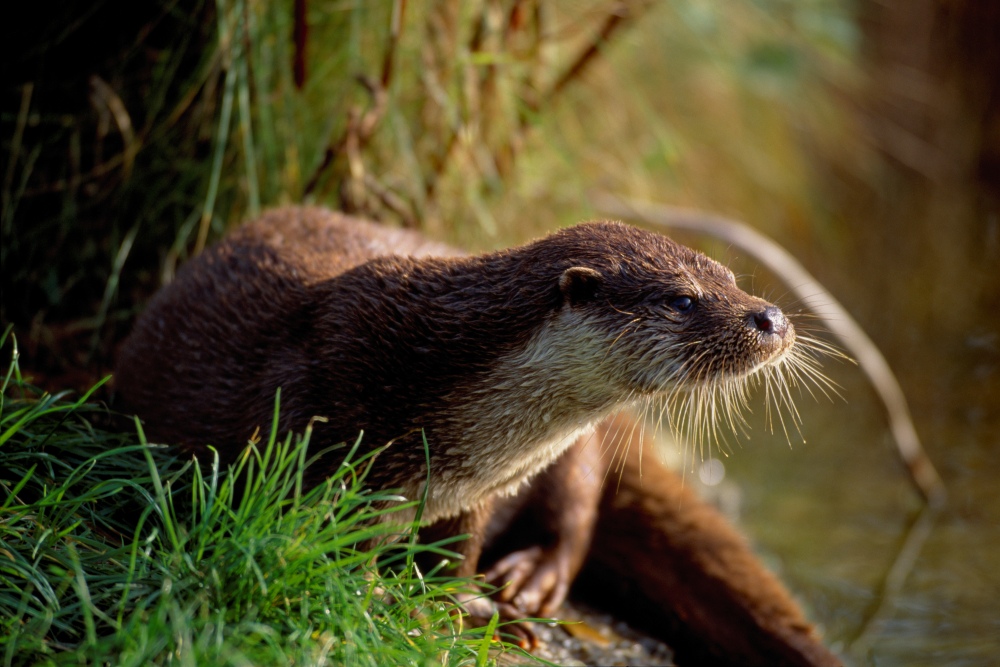Otter

Status
Native, widespread but rare
Population
11,000
Scientific name
Lutra lutra
Otters are restless, playful and secretive mammals that spend most of their time along riverbanks. They have stocky legs, a long, streamlined body, and a broad muzzle with prominent, sensitive whiskers. They are perfectly adapted to a semi-aquatic life. Their webbed feet and long, muscular tail enable them to swim comfortably at about one metre per second and they will dive to catch small fish or to avoid danger. Otters can see as well under water as they can above it, allowing them to hunt for fish. From a distance, they can be confused with mink, particularly as they are found in similar habitats, but otters are much larger and when they swim, they do so with just their head showing above the water, while mink swim with their heads and backs exposed.
Head-body length: 59 – 110cm (males are larger than females on average)
Tail length: 35 – 45cm
Weight: 7 – 11kg
Lifespan: Up to 10 years
Reproduction
Mating occurs at any time of the year and females give birth to 2 – 3 cubs, usually between May and August. Cubs are usually born in a holt in a bank, or between rocks or tree roots. Newborns are only about 12cm long but grow quickly and can swim at three months. They leave the protection of their mothers at 10 – 12 months and can breed at 2 years old.
Diet
Mostly fish such as eels, but also water birds, such as moorhens and ducks, frogs and rabbits.
Habitat
Wide range of aquatic habitats including clean rivers, lakes and coastlines; less commonly, marshy areas.
Predators
Few natural predators.
Threats
Road traffic accidents; drowning in fish and lobster traps; and pollution such as oil and PCBs.
Conservation status
GB Red List: : Least Concern (LC); Least Concern (LC) in England, Vulnerable (VU) in Scotland and Wales; globally, Near Threatened (NT). They are fully protected in the UK under Schedule 5 of the Wildlife and Countryside Act 1981.
Population size and distribution
GB population: 11,000.
Did you know?
Otters mark their territory with their droppings, known as spraints, which they leave at conspicuous sites along the water’s edge, and surveys of these have been the primary way that otter populations have been monitored. The spraints have an unusual sweet, musky smell that has been compared to the smell of jasmine tea.
